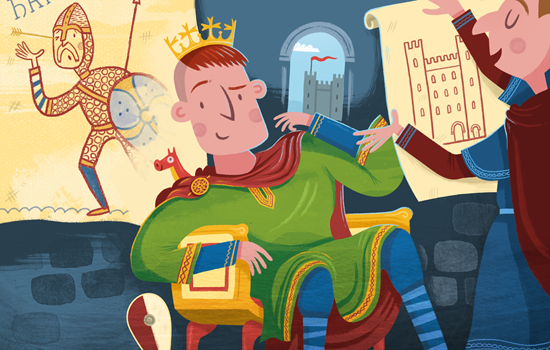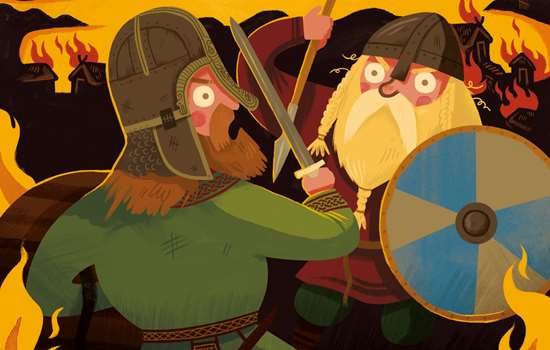MEET ST AELRED, THE KINDLY MONK!
Emily: Why are you called Aelred?
My name means noble counsel – it’s Anglo Saxon. My family come from the north of England and they are devoted to the northern saints – especially St Cuthbert.
Sam: What does a monk do?
When you become a monk you leave the world behind with all its riches and possessions, and instead you come to an abbey and dedicate your life to the glory of God.
Sam: What do you eat for breakfast?
We have one meal a day, usually in the middle of the day, which is sort of like porridge, made of bread.
Sam: Why are your robes white?
White is the natural colour of wool when it comes off a sheep’s back and so it is the cheapest, and it’s a way of showing that we believe strongly in our vow of poverty.
Emily: Do you have to be silent all the time and, if so, how do you communicate?
St Benedict, whose rule we follow, stresses that silence is important as it stops us gossiping and lets us concentrate on God. We’re not allowed to talk at certain times of day but we have signs we use to communicate so people still know what is going on!
FIND OUT MORE ABOUT RIEVAULX ABBEY
Rievaulx Abbey was founded by 12 monks in North Yorkshire in 1132. The abbey’s magnificent ruins are evidence of the dedication of its monks. As well as being a place of worship, the abbey was very influential.
The Rievaulx monks started off as Cistercians, worshipping in a simple and strict way. The abbey was gradually rebuilt and extended, with the most signficant changes made in the 1220s to provide a magnificent setting for a shrine to St Aelred.
A type of monk, called lay brothers, helped look after 12,000 sheep. Sheep fleeces were sold as far away as Italy and, thanks to the money they generated, the abbey was very wealthy.
RAIDERS AND RUINS
While many abbeys were attacked by Vikings in earlier centuries, Rievaulx’s location in north England meant it was a target for Scottish raiders. After the Scots defeated the English army at the Battle of Scawton Moor in 1322, King Edward II, who was staying at the abbey, had to flee, leaving his wife, treasure and even his dinner!
Rievaulx Abbey was shut down on 3 December 1538, as part of the Suppression of the Monasteries under King Henry VIII in 1536–40. By this time, Rievaulx’s community had shrunk to just 23 monks.
Today, when the sun shines through the remains of its great arches, the ruins of Rievaulx are very beautiful, providing inspiration to many artists and writers over the last 200 years. Perhaps you should plan a visit too?
VISIT THE ABBEY
Visit Rievaulx Abbey to see the impressive ruins of one of England’s most powerful Cistercian monasteries.
Explore the museum, which is full of previously unseen artefacts, and wander the ruins to discover more about the building and how it looked at different points during its development. You can also hunt for clues of medieval life with our special family trail.
PLAN YOUR VISIT



